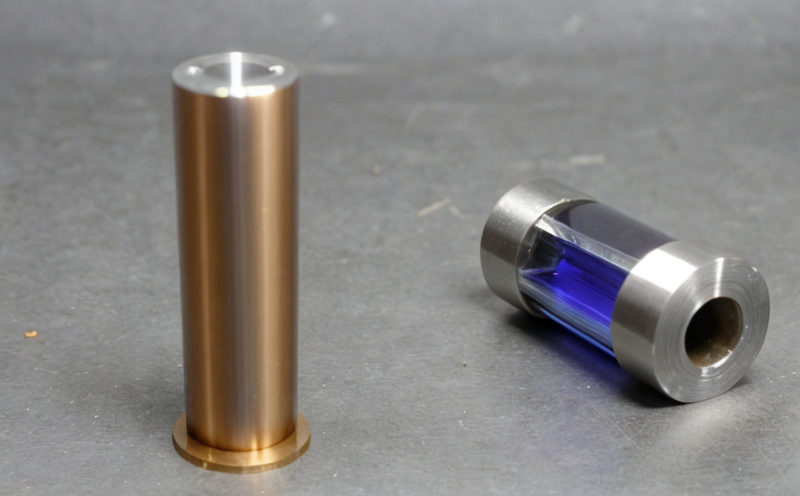Dimensional Stability & Shrinkage Testing
The concept of dimensional stability is critical in textile manufacturing, especially for garments and home textiles where the final product’s size and shape must remain consistent throughout its lifecycle. Dimensional stability testing evaluates how a fabric or garment retains its dimensions under various conditions such as washing, drying, and exposure to heat. This test ensures that the product maintains its fit and appearance over time, which is essential for customer satisfaction and brand reputation.
Shrinkage, in particular, can significantly impact consumer experiences if not managed correctly. Shrinkage occurs when materials lose their original size due to washing or drying processes. Understanding and controlling shrinkage is vital for both manufacturers and retailers as it directly affects the final product’s fit and comfort. This test measures how much a fabric sample shrinks after specific treatments, providing critical data for quality assurance.
For accurate testing of dimensional stability and shrinkage, strict adherence to international standards such as ISO 13938-2 is necessary. These guidelines ensure that the tests are conducted under controlled conditions, producing reliable results. The methodology involves subjecting textile samples to various washing cycles followed by drying at specific temperatures and times. After treatment, the samples undergo precise measurement to determine any changes in length and width.
Textile manufacturers must consider multiple factors during this process, including fabric composition, yarn structure, and finishing treatments. Different fabrics require different handling methods; for instance, synthetic fibers may behave differently compared to natural fibers like cotton or wool. Understanding these differences helps tailor the testing procedures appropriately. Additionally, post-treatment shrinkage can be influenced by environmental conditions such as temperature, humidity, and washing time.
Dimensional stability is not just about preventing shrinkage; it also involves assessing how well a fabric maintains its shape during wear and wash cycles. High-dimensional stability ensures that garments retain their intended fit after repeated use. This attribute becomes particularly important for premium brands aiming to deliver consistent quality across all products. Testing protocols are designed to simulate real-world scenarios, ensuring that the results reflect actual performance in end-user applications.
Manufacturers often use sophisticated equipment like thermal cycling machines and moisture conditioning chambers to conduct these tests accurately. These devices provide controlled environments where samples can be subjected to precise temperature and humidity conditions, mimicking typical washing and drying procedures used by consumers. By using advanced instrumentation, laboratories ensure consistent and reproducible results.
The importance of dimensional stability testing extends beyond mere compliance with industry standards; it plays a crucial role in enhancing product quality and customer satisfaction. Consumers expect their clothes to fit well after multiple washes without distorting or changing shape. Ensuring that textiles meet high-dimensional stability standards helps maintain this expectation, thereby building trust between manufacturers and consumers.
Scope and Methodology
| Test Parameters | Description |
|---|---|
| Sample Preparation | Clean, dry fabric samples cut according to specified dimensions. |
| Washing Conditions | Determine wash temperature and duration based on fabric type. |
| Drying Conditions | Specify drying temperatures and times relevant for the material. |
| Measurement | Accurately measure initial dimensions before treatment using digital calipers. |
| Treatment Parameters | Description |
|---|---|
| Wash Cycle | Simulate standard washing conditions to ensure realistic results. |
| Dry Cycle | Apply drying treatments similar to typical consumer practices. |
| Environmental Conditions | Control temperature and humidity during treatment to prevent variability. |
| Post-Treatment Measurement | Measure sample dimensions after all treatments are completed. |
The testing procedure typically involves subjecting the prepared fabric samples to a series of washing cycles followed by drying at specified temperatures and times. After treatment, the samples undergo careful measurement using precision instruments like digital calipers. These measurements provide quantitative data on any dimensional changes experienced during processing.
International standards such as ISO 13938-2 outline precise methods for conducting these tests ensuring consistency across different laboratories worldwide. Compliance with these guidelines guarantees accurate and reliable results, which are essential for meeting regulatory requirements and maintaining product quality.
Benefits
- Enhanced Product Quality: Ensures that fabrics maintain their original dimensions even after multiple washes.
- Improved Customer Satisfaction: Prevents dissatisfaction caused by garments shrinking or losing shape over time.
- Increased Brand Reputation: Builds trust with consumers who value consistent product performance.
- Competitive Advantage: Allows manufacturers to differentiate themselves through superior quality control practices.
- Regulatory Compliance: Ensures that products meet industry standards and regulations related to textile manufacturing.
- Eco-Friendly Production: Minimizes waste by optimizing the use of raw materials without compromising on final product dimensions.
By incorporating dimensional stability testing into their quality control processes, manufacturers can significantly improve the overall performance and longevity of their products. This not only enhances customer satisfaction but also contributes positively to brand image and reputation in the competitive market environment.
Why Choose This Test
The Dimensional Stability & Shrinkage Testing is crucial for several reasons. Firstly, it helps manufacturers understand how their fabrics behave under real-world conditions, allowing them to make informed decisions about material selection and processing methods. Secondly, this test ensures that end products meet strict quality standards, thereby enhancing consumer trust and satisfaction. Additionally, compliance with international standards such as ISO 13938-2 adds credibility and reliability to the testing results.
For R&D engineers, this test provides valuable insights into how different types of fabrics respond to various treatments. This information can be used to develop new products or improve existing ones. For quality managers and compliance officers, it offers a reliable method for ensuring that all manufactured items meet specified dimensional requirements. Moreover, this testing process supports sustainable practices by minimizing waste while maintaining high-quality standards.
By investing in Dimensional Stability & Shrinkage Testing, businesses can gain competitive advantages through superior product performance and enhanced customer satisfaction. This approach not only meets regulatory demands but also contributes positively towards eco-friendly production processes.





